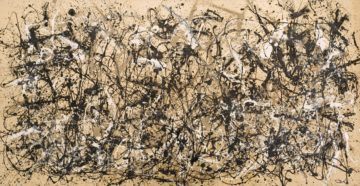by Christopher Horner
Kant on Beauty

Immanuel Kant is perhaps the most influential philosopher of modern times. His Critique of Pure Reason (1781) and Critique of Practical Reason (1788) famously investigated the the limits to human knowledge and the nature (as he saw it) of true morality respectively. But in 1790 he turns his attention to judgment, to what it is and what that implies, and what he says in The Critique of Judgment is interesting. Whether one agrees with him or not, what he has to say remains among the most suggestive and fascinating contributions to the question of what a judgment is. He discusses the way in which we find purpose and meaning in the world, the ‘sublime’ and much more, but my focus here is just on what he has to say about the judgment of beauty in nature and art, and to what extent we can find it convincing.
Judgment
For Kant, judgment has two aspects: determinant and reflective. In determinant judgment one has a rule, a concept or category that one applies to a particular instance. To give a simple example: I have the concept of a saucer (round, made of china, has a circular indent for a cup, etc.); I encounter a particular thing that ‘falls under’ my concept of a saucer and I make the judgment: this thing here is a saucer. Two things about this kind of judgment are worth remarking on immediately. One is the coercive nature of the judgment. If the particular fits the concept, then it is a saucer – a correct judgment must be that it is a saucer, and all competent judges will have to agree it is a saucer, and not an umbrella or a computer. There is something automatic in our experience of this aspect of judgment, as if one were immediately following orders. The understanding legislates – it gives the rule for correct judgment of a particular.
How is a correct ‘fit’ achieved between the concept (saucer) and that thing in front of me (which I recognise as a saucer)? Something must be bringing them together – and for Kant this is the imagination, here acting as the ‘handmaiden’ of the understanding. Think of determinant judgment as a kind of logical judgment – a ‘downward’ move as it were, from the concept to the particular: ‘the concept saucer applies to this x’.
Kant calls the other aspect of judgment reflective. Here we make a judgment for which there is no pre-existing rule or concept. We confront a particular for which there is no rule, no pre-existing classifying concept. And it’s here we get to judgments about beauty, whether in nature or the arts. The The judge must fall back, not on a classifying concept, but on her own experience of pleasure in the presence of a beautiful thing. An aesthetic judgment cannot demand that all other competent judges agree on a judgment of beauty, as they must with ‘this is a saucer’. The judge must appeal to, but cannot coerce, the others in the judgment that ‘this is beautiful’. The hope is that they will agree; the possibility is that they may not.
All That Useless Beauty
 Notice here firstly that, an aesthetic judgment, for Kant, isn’t cognitive: it’s about how the beautiful makes us feel, not what we can know. That feeling is delight, or pleasure. Secondly, Kant is making a point about the intersubjective nature of such judgments: he assumes the presence of others, who share a kind of common sense (or ‘sensus communis’.) Judgment must be communicable: it is a public faculty. Because the judgment is reflective, it is not determined by a concept; because it is exercised as a public faculty it escapes the arbitrary nature of the merely subjective. And this experience must disinterested: our response must not be coloured by what we think we can gain from the beautiful thing, or by merely private associations and preferences. We admire the horse for its proportions, its beautiful form – not because we think it will carry us quickly to town, or get us admired once we are there.
Notice here firstly that, an aesthetic judgment, for Kant, isn’t cognitive: it’s about how the beautiful makes us feel, not what we can know. That feeling is delight, or pleasure. Secondly, Kant is making a point about the intersubjective nature of such judgments: he assumes the presence of others, who share a kind of common sense (or ‘sensus communis’.) Judgment must be communicable: it is a public faculty. Because the judgment is reflective, it is not determined by a concept; because it is exercised as a public faculty it escapes the arbitrary nature of the merely subjective. And this experience must disinterested: our response must not be coloured by what we think we can gain from the beautiful thing, or by merely private associations and preferences. We admire the horse for its proportions, its beautiful form – not because we think it will carry us quickly to town, or get us admired once we are there.
Kant has the idea of a sense shared by all, which is not the same as a sensory response (the agreeable: enjoying a flavour, for example). It is a result of the operation of reflection – I am reflecting on the way beauty makes me feel. So responding to Mozart won’t be like enjoying the taste of vanilla ice-cream: it must be publicly communicable in a way that goes beyond licking one’s lips. But does everyone have to agree? Must we all feel the same?
Taste
For Kant, it is a paradoxical demand that not everyone will be able to assent to, even though we feel they ought to:
…he demands that they agree. He reproaches them if they judge differently, and denies that they have taste, which he nevertheless demands of them, as something they ought to have. [1]
But why should a disagreement be taken as evidence of a lack of taste? If the one who pronounces his judgment doesn’t find agreement in her interlocutor (and as we have seen, Kant is clear that she may not) she may then deny they have taste, but she might equally now take part in a discussion with the other about that disagreement. Kant tells us that the judge of beauty must woo the other’s agreement, and that agreement is not certain. But what does it mean to make a ‘proper’ judgment of taste? Who’s to say?
 Kant’s surprising answer is: taste itself, as revealed by tradition. Taste will not only guide the judge (the spectator or listener) but also the artist herself. Taste disciplines genius, it ‘clips its wings’. So taste appears to genius as a kind of law, the confrontation between the free productions of the imagination and the lawfulness of the understanding. Taste ensures that the genuinely new avoids becoming unintelligible, as it must communicate to others. But what ‘disciplines’ taste? Taste, after all, will be subject to the prejudices and distortions of interest and error. The genius produces something genuinely new, not from some pre-existing rule or model, and so he modifies the tradition (‘art acquires a new rule by this, thus showing that the talent is exemplary’); but her work is saved from being arbitrary by the disciplining power of taste.
Kant’s surprising answer is: taste itself, as revealed by tradition. Taste will not only guide the judge (the spectator or listener) but also the artist herself. Taste disciplines genius, it ‘clips its wings’. So taste appears to genius as a kind of law, the confrontation between the free productions of the imagination and the lawfulness of the understanding. Taste ensures that the genuinely new avoids becoming unintelligible, as it must communicate to others. But what ‘disciplines’ taste? Taste, after all, will be subject to the prejudices and distortions of interest and error. The genius produces something genuinely new, not from some pre-existing rule or model, and so he modifies the tradition (‘art acquires a new rule by this, thus showing that the talent is exemplary’); but her work is saved from being arbitrary by the disciplining power of taste.
Kant seems to want to allow genius freedom, but only up to a point. But could the artist be too far ahead of contemporary taste to be adequately judged? One thinks here of Beethoven’s late quartets, of which it has been said that he created the taste by which he would later be judged.
 So a judgment of taste derives from the feeling of pleasure arising in the judge, which is communicable: the other, or others, should be having this experience too. But the pleasure that the judge feels arises because of the ‘free play’ of the powers of the understanding and imagination ‘within’ her. This is a kind of harmony that the judge looks for in others. Taste is the progressive negotiations over time of all the judges, stimulated at various intervals by the novel productions of genius: self-regulation through provisional consensus, but not final Law. The sensus communis is something that is always already coming into being through the judgments themselves.
So a judgment of taste derives from the feeling of pleasure arising in the judge, which is communicable: the other, or others, should be having this experience too. But the pleasure that the judge feels arises because of the ‘free play’ of the powers of the understanding and imagination ‘within’ her. This is a kind of harmony that the judge looks for in others. Taste is the progressive negotiations over time of all the judges, stimulated at various intervals by the novel productions of genius: self-regulation through provisional consensus, but not final Law. The sensus communis is something that is always already coming into being through the judgments themselves.
Aesthetic Ideas
 The productions of the free imagination, fine art, get their rule from ‘aesthetic ideas, which are essentially distinct from rational ideas of determinate purposes.’ They are products that have spirit, spirit that sets the mental powers into a swing through the exhibition of these aesthetic ideas. An aesthetic idea is
The productions of the free imagination, fine art, get their rule from ‘aesthetic ideas, which are essentially distinct from rational ideas of determinate purposes.’ They are products that have spirit, spirit that sets the mental powers into a swing through the exhibition of these aesthetic ideas. An aesthetic idea is
a presentation of the imagination that prompts much thought, but to which no determinate thought whatsoever…can be adequate, so that no language can express it completely and allow us to grasp it. It is easy to see that an aesthetic idea is the counterpart (pendant) of a rational idea, which is, conversely, a concept to which no intuition (presentation of the imagination) can be adequate
The genius produces, through the aesthetic idea, a movement or delirium, a play or a swing of the powers of imagination and understanding. The products of genius are examples to be followed by other geniuses, but not slavishly copied. What would an example of an Aesthetic Idea be? Pollock’s Autumn Rhythm? Magritte’s strange images of men in bowler hats? The first bars of Beethoven’s Fifth Symphony?
 Dissensus
Dissensus
Disagreement can, I’d say, be taken as a sign that the interlocutor is a fully functioning member of the republic of taste, not that she must be brought into line. Argument might be interminable, but it need not be de haut en bas (‘you have no taste, no cultivation’). Rather, the condition for the successful use of judgment would be the agon, the clash of opinions, and the attempt to ‘see’ the other as different but not alien. When Kant says ‘we permit no one to hold a different opinion’ we can suppose that by this he means that the judgment of the beautiful is not trivial, not ‘private’ taste, that it is vital to us (Rilke’s ‘you must change your life’), not the complacent report about ‘how we are feeling’ (the agreeable). We feel it on our pulse: we utter the judgment under the imperative of beauty. The other disagrees: well, so what? We might want to conclude that the point about the exercise of judgment is not that all will converge on the same judgments, but that the ‘ideal standard’ is just the ideal, the promise of an always to be deferred community. I demand agreement but I must sufferdissent. Perhaps the judge who is also a citizen should come to prize disagreement: for it is surely dissent that is the mark of a living community, in politics as in the republic of taste.

[1] All quotations are from the Critique of Judgement, translated by JC Meredith, Oxford University Press 1928.
